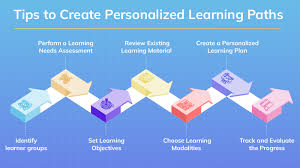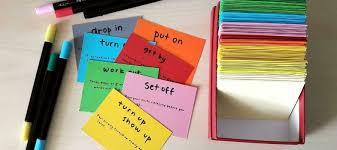How to Build a Learning Routine That Fits Your Lifestyle
In today’s fast-paced world, building a learning routine that fits seamlessly into your lifestyle is crucial for continued personal and professional growth. Whether you’re a student, a professional looking to acquire new skills, or simply someone who loves learning, crafting a routine that works for you can make the process more effective and enjoyable. In this article, we will explore how to build a learning routine that aligns with your lifestyle, enhances productivity, and keeps you motivated.
1. Assess Your Current Schedule
Before you start creating a learning routine, take a step back and assess your current schedule. Understanding how your day is structured will help you identify time blocks where learning can fit without overwhelming you.
Start by writing down your daily commitments, such as work, school, social activities, and personal time. Look for gaps where you can carve out time for learning. It could be during the morning before your day starts, during lunch breaks, or in the evening after work. The key is to find moments that work for you, ensuring that learning becomes a natural part of your routine rather than an afterthought.
2. Set Clear Learning Goals
Having clear and specific learning goals is essential to stay focused and motivated. Without goals, it’s easy to get distracted or feel lost. Ask yourself the following questions when setting your learning goals:
- What skill or knowledge do I want to acquire?
- Why is it important to me?
- How will I measure my progress?
For example, if you want to learn a new language, your goal might be to learn 50 new words every week. Or, if you’re interested in coding, your goal could be to complete a specific online course within a month. Make sure your goals are specific, measurable, attainable, relevant, and time-bound (SMART).
3. Break Learning Into Manageable Chunks
Learning can sometimes feel overwhelming, especially when you’re trying to acquire a new skill or master a complex topic. The key to success is breaking down your learning into manageable chunks. This is where the idea of microlearning comes in—focusing on small, bite-sized pieces of information that you can easily digest.
For example, instead of committing to learning a new language in one go, break it down into smaller tasks, like learning 10 new words every day or mastering basic grammar rules over a week. Similarly, if you’re learning a new programming language, break it down by focusing on one concept, such as variables or functions, each week.
4. Build Consistency, Not Intensity
Consistency is far more important than intensity when it comes to building a learning routine. Rather than dedicating hours of your day to learning, focus on creating a habit of daily learning, even if it’s just for 15-30 minutes. The goal is to make learning a regular part of your day that doesn’t feel like a burden.
For instance, you could start your day with 20 minutes of reading or set aside 30 minutes in the evening to practice a new skill. Consistency will help reinforce your knowledge and skills over time, leading to steady improvement.
5. Find the Right Learning Method
Different people have different learning styles, and finding the method that suits you is key to building an effective learning routine. There are various ways to learn, and it’s essential to experiment with different methods to see what works best for you.
- Visual Learners: If you’re a visual learner, you may benefit from using videos, infographics, or diagrams to understand concepts.
- Auditory Learners: Listening to podcasts, audiobooks, or recorded lessons might be more effective for you.
- Kinesthetic Learners: If you’re a hands-on learner, you may find that engaging in interactive exercises or building practical projects helps you grasp concepts better.
Try incorporating a combination of methods into your routine to keep your learning sessions dynamic and engaging.
6. Make Learning a Part of Your Environment
To stay consistent with your learning routine, create an environment that encourages learning. This could involve setting up a dedicated study space, removing distractions, or surrounding yourself with motivational quotes or reminders.
For example, if you’re learning a new language, you can decorate your study space with flashcards of common phrases or place a language learning app on your phone’s home screen for easy access. By immersing yourself in your learning environment, you’re more likely to stay focused and committed to your routine.
7. Use Technology to Your Advantage
In today’s digital age, technology offers numerous tools that can make learning more convenient and effective. Learning apps, online courses, audiobooks, and even social media platforms dedicated to education can help streamline your learning process.
- Learning Apps: Duolingo for language learning, Khan Academy for various subjects, or Headspace for mental health can help you stay on track.
- Online Courses: Platforms like Coursera, Udemy, and LinkedIn Learning offer flexibility in terms of when and where you can learn.
- Task Management Tools: Apps like Trello or Todoist can help you track your learning progress and stay organized.
Leveraging these tools can make your learning routine more structured and accessible.
8. Stay Flexible and Adjust When Necessary
While consistency is essential, flexibility is equally important. Life is unpredictable, and your schedule may change from time to time. If you find yourself overwhelmed or unable to stick to your learning routine, don’t be too hard on yourself. Adjust your routine as needed and allow yourself to experiment with different schedules.
For instance, if a project at work is taking up more time, consider shortening your learning sessions or moving them to weekends. The goal is to create a routine that is adaptable to your life rather than forcing a rigid structure that may cause stress or burnout.
9. Make Time for Breaks and Rest
Rest is an integral part of learning. Taking breaks throughout your learning sessions can help prevent burnout and allow your brain to absorb the information more effectively. Use techniques like the Pomodoro method, where you work for 25 minutes and then take a 5-minute break.
In addition, make sure to take full days off to recharge. Rest and relaxation are just as important as learning itself because they allow you to stay fresh and motivated.
10. Track Your Progress and Celebrate Milestones
Tracking your progress helps you stay motivated and see how far you’ve come. Keep a journal or use a progress tracker to note your learning milestones. Whether it’s mastering a difficult concept, finishing a course, or successfully applying a new skill in real life, acknowledging your achievements will boost your confidence and drive.
Celebrate these small victories by rewarding yourself. For example, you might treat yourself to a movie night after completing a chapter of a course or take a short trip once you finish a learning milestone.
Conclusion
Building a learning routine that fits your lifestyle is all about making learning a natural and enjoyable part of your day. By assessing your schedule, setting clear goals, breaking down tasks, using technology, and staying flexible, you can create a routine that works for you. Remember, consistency and balance are key. Stay committed, track your progress, and adjust your routine when necessary. With the right approach, learning will become an enriching and sustainable part of your lifestyle.


